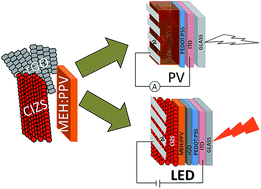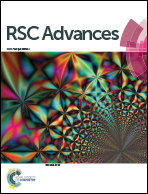Solution-processed reduced graphene oxide in light-emitting diodes and photovoltaic devices with the same pair of active materials
Abstract
We have introduced organic-dispersed reduced graphene oxides (rGO) in light-emitting diodes and photovoltaic devices. Both the devices were based on a conjugated polymer and inorganic nanoparticles. While we used a derivative of poly(para-phenylenevinylene) (MEH-PPV) as the organic semiconductor, zinc diffused copper indium disulphide (CIZS) quantum dots have been used as the inorganic counterpart that were based on nontoxic elements. We have shown that the device architecture in relation to rGO determines the functionality of a device based on the hybrid materials. A layer of rGO acted as a hole transport layer in MEH-PPV/CIZS heterojunction LEDs. On the other hand, the carbon allotrope added to MEH-PPV:CIZS bulk-heterojunction quenched photoluminescence of the components through a photoinduced electron-transfer process thereby dissociating photogenerated excitons yielding PV properties. The power conversion efficiency maximized at an optimum rGO concentration. The results show the role of reduced graphene oxides with the same pair of active materials in light-emitting diodes and photovoltaic devices.


 Please wait while we load your content...
Please wait while we load your content...